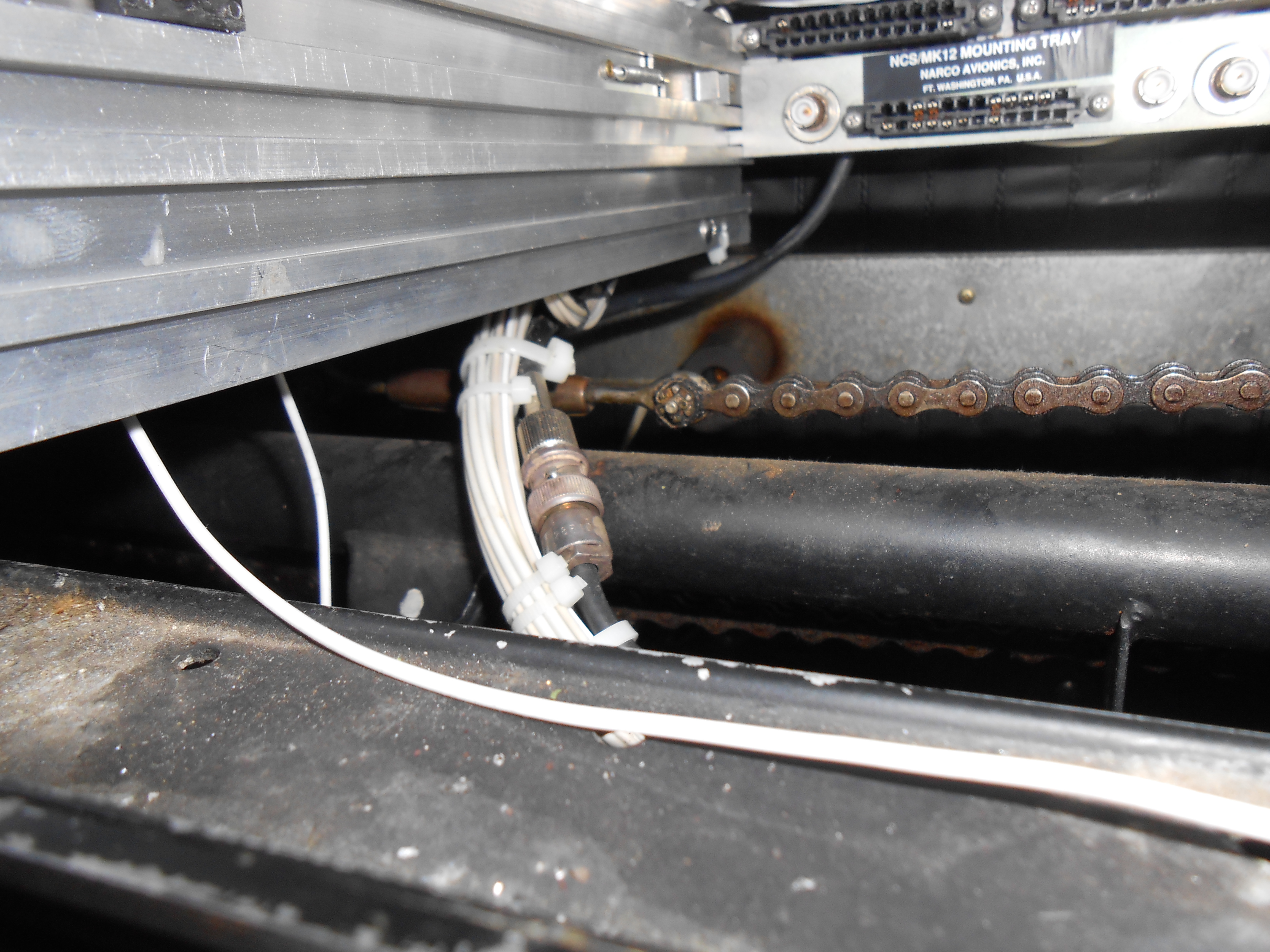Under the Cowling
Electrical Troubleshooting
Recently, a customer had an ongoing issue with his Garmin GPS intermittently failing in flight. He had an avionics shop near his home airport repeatedly check the unit, but even after sending it off to be bench tested (twice), they could never duplicate the failure. The shop even went so far as to check the unit after it was put in a freezer and, later, in a very hot environment, to see if temperature made a difference. Whenever it was checked, the unit always had proper power and a good ground supplied to the tray, yet they still could not duplicate or determine the problem.
Using the process of elimination (and because the part was relatively inexpensive), he and I decided to replace the circuit breaker—problem solved. Though the breaker never popped, it must have had excessive resistance or a bad internal connection that prevented current to flow at certain times. After spending countless hours and hundreds of dollars on the problem, the owner was finally relieved to have it fixed.
The source of electrical problems can be hard to trace, especially if the fault is intermittent. For components to operate properly they must have the correct voltage and a good ground. Loose or corroded connections can cause a variety of problems. When checking for faults in a circuit, it is a good idea to go ahead and disconnect and clean the connectors with a fine grit sandpaper or Scotch-Brite. Battery terminals can be treated with an anti-corrosion spray to help keep them from corroding.
A good electrical multimeter is a must for diagnosing any electrical issue. Resistance, voltage, and amperage can be measured at different points to give an accurate analysis of what is actually occurring at any given time in a particular system. Depending on what is being checked, electrical meters must be selected to certain settings.
The setting for direct current (DC) voltage is the “V” with the straight line underlined by dashes. Resistance and continuity are checked by measuring ohms of resistance to electrical flow. The setting on the meter for checking resistance looks like a horseshoe.
Some meters don’t have a setting for measuring amperage; but if they do, it is the setting with the letter “a.” When measuring amperage, the red lead must be transferred to a different connection as indicated on the meter. Also, the meter needs to be placed in the circuit so that current has to run through it, rather than parallel to it. In other words, to check amperage to a light, leave the switch off and use the meter to jumper the switch by placing the leads so that the meter bridges the circuit, sending power to the light. (This will turn on whatever you’re checking if the bus supplying power is energized.)
Whenever a component is not receiving either power or a ground, the problem could be a broken, disconnected, or corroded wire or connection. To check continuity along a wire run, disconnect the wire at one end of the circuit and ground it to the frame by using an alligator clip, etc. (Be sure the place where you ground it is free of paint or corrosion so that you can be sure you have a good ground.) Then, disconnect the wire at the other end of the circuit and check for continuity with the meter by connecting the red lead to the wire and grounding the black meter lead to the frame.
Continuity is read by placing the meter in the ohms position and the amount of resistance through the wire is read on the meter. Most circuits need 5 ohms or less of resistance to be considered to have good continuity. Airframes with significant corrosion between the seams can create a host of problems because the airframe itself becomes a poor grounding source.
Sometimes, a wire can have good continuity, but also have a bare place or other defect that allows current to flow directly to ground or to another wire. Shorts to ground are detected by disconnecting both ends of a wire run and measuring for resistance between one end and ground. In this case, a good wire run would measure infinity on the meter, meaning that the resistance between the wire and ground is infinite. Shorts to other wires are detected by disconnecting both ends of all wires being checked and checking the resistance between one wire and each of the others.
A megohmmeter or “megger” is a specialized electrical meter that can detect high resistance shorts to ground that a regular multimeter may not pick up. These are sometimes called insulation testers because they test to see if the coating on the wire is still preventing the electrical flow from trying to escape to ground. The megger sends voltage through the wire and can detect whenever the voltage escapes to ground. In most circuits, a very high resistance short to ground in the kilo-ohm or mega-ohm range would not cause a problem, but in some sensitive circuits, it does.
Once it has been determined that a particular component is receiving everything it needs to work properly (power and a ground), the component itself can then be considered at fault. By properly troubleshooting electrical circuits an owner can pinpoint the true cause of an electrical problem, thus avoiding the time-consuming and often costly replacement of components that, in the end, may not have been defective in the first place.






